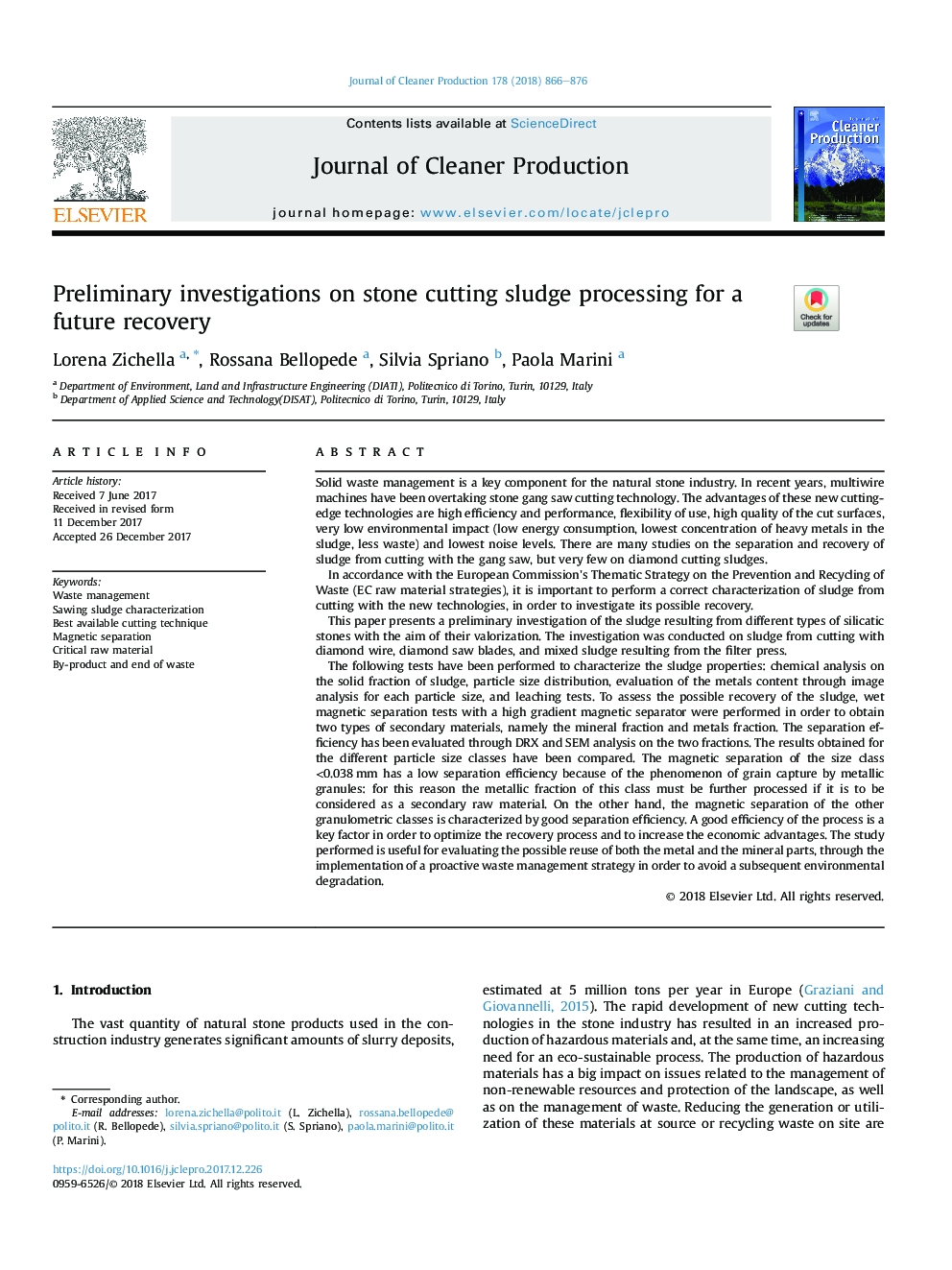| Article ID | Journal | Published Year | Pages | File Type |
|---|---|---|---|---|
| 8098547 | Journal of Cleaner Production | 2018 | 11 Pages |
Abstract
The following tests have been performed to characterize the sludge properties: chemical analysis on the solid fraction of sludge, particle size distribution, evaluation of the metals content through image analysis for each particle size, and leaching tests. To assess the possible recovery of the sludge, wet magnetic separation tests with a high gradient magnetic separator were performed in order to obtain two types of secondary materials, namely the mineral fraction and metals fraction. The separation efficiency has been evaluated through DRX and SEM analysis on the two fractions. The results obtained for the different particle size classes have been compared. The magnetic separation of the size class <0.038â¯mm has a low separation efficiency because of the phenomenon of grain capture by metallic granules: for this reason the metallic fraction of this class must be further processed if it is to be considered as a secondary raw material. On the other hand, the magnetic separation of the other granulometric classes is characterized by good separation efficiency. A good efficiency of the process is a key factor in order to optimize the recovery process and to increase the economic advantages. The study performed is useful for evaluating the possible reuse of both the metal and the mineral parts, through the implementation of a proactive waste management strategy in order to avoid a subsequent environmental degradation.
Keywords
Related Topics
Physical Sciences and Engineering
Energy
Renewable Energy, Sustainability and the Environment
Authors
Lorena Zichella, Rossana Bellopede, Silvia Spriano, Paola Marini,
